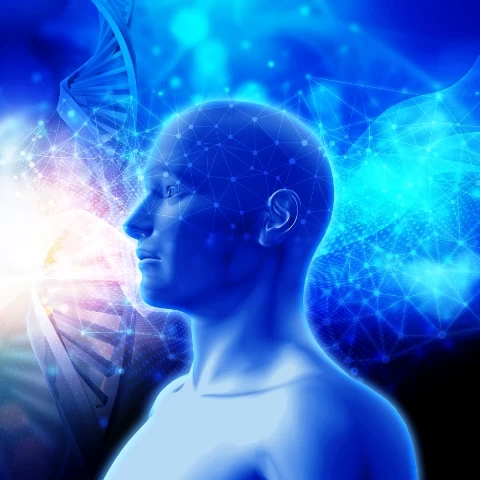
Regulate Your Body's Energy Flow with Neural Therapy
- Regulate Your Body's Energy Flow with Neural Therapy
- What is Neural Therapy?
- How is Neural Therapy Applied?
- The Theoretical Foundations of Neural Therapy
- Areas of Application for Neural Therapy
What is Neural Therapy?
Neural Therapy is an alternative medical method aimed at treating diseases by regulating the nervous system present in the body. In this method, local anesthetic agents (usually procaine) are injected into specific points. Neural Therapy was developed by German physicians Ferdinand and Walter Huneke, and its basic principle can be explained as regulating the interaction of nerves and nerve nodes (ganglia) in the body with each other and with other tissues.
The fundamental theory of Neural Therapy is based on the idea that discomforts or damages occurring in various areas of the body can spread to other parts of the body through the nervous system and cause problems there as well. Therefore, practitioners of Neural Therapy use local anesthetic injections in specific areas of the body to regulate the effects of negatively affected nerve pathways.
Neural Therapy is commonly used for pain treatment and alleviating certain chronic conditions. It is especially preferred as an alternative approach in the treatment of musculoskeletal disorders, migraines, fibromyalgia, and similar conditions. Injections are administered with the aim of reducing a patient's pain levels, alleviating discomfort, and restoring energy balance in the body.
How is Neural Therapy Applied?
Neural Therapy is an alternative medical method that aims to affect the nervous system by injecting local anesthetic substances into the body. These injections are made at specific points in the body, often focusing around nerve nodes called "ganglia." An overview of how Neural Therapy is applied is presented below:
- Patient Evaluation: Before starting Neural Therapy, a healthcare professional should evaluate the patient's medical history, symptoms, and conditions. This is important to determine which areas to inject and to create a treatment plan.
- Identification of Injection Points: The practitioner determines the injection points based on the patient's condition and symptoms. These points may focus on ganglia (nerve nodes) in the body, painful areas, or the centers of symptoms.
- Local Anesthetic Injections: Injections are typically made using local anesthetic agents. These agents can temporarily block nerve signals in the body. Injections are administered under the skin, into muscles, or subcutaneous areas. Following injections, the practitioner can observe the patient's reactions and potential effects.
- Treatment Sessions and Follow-up: Neural Therapy is usually administered in multiple sessions. The duration of treatment varies depending on the type, severity of the patient's condition, and their response. Regular follow-up and assessment are important to evaluate the effectiveness of the treatment.
- Possible Side Effects and Precautions: Neural Therapy application may have certain risks and side effects. Side effects like sensitivity, pain, infection, or allergic reactions can occur at the injection sites. Additionally, there might be cases where patients respond positively to Neural Therapy, as well as cases where it proves ineffective or worsens symptoms.
- Expert Supervision: The individual applying Neural Therapy should preferably be a healthcare professional with medical education and experience in the field. The expert should create the most suitable treatment plan, considering the patient's medical history, symptoms, and other treatment methods.

The Theoretical Foundations of Neural Therapy
The theoretical foundations of Neural Therapy are shaped around concepts related to the body's nervous system and energy flow. Key theoretical aspects supporting Neural Therapy could include:
- Biotop Model: The foundational theory of Neural Therapy, the Biotop Model, suggests that tissues and organs in the body interact with each other, and this interaction determines the energy balance. In this model, any disease or discomfort is thought to originate at a specific "biopoint," a balance point, and disruptions in these points can affect other areas of the body.
- Ganglia and Nerve Network: Neural Therapy aims to influence the nervous system in the body. In this context, nerve nodes called "ganglia" are particularly important. Ganglia are points where nerves converge and where many functions related to nerve transmission occur. Neural Therapy attempts to restore balance in the body by regulating the interaction of ganglia and nerves.
- Electrical Interactions: Neural Therapy seeks to affect the balance of electrical signals in the body. Theoretically, body discomforts or pain might disrupt the communication of nerve pathways, causing irregularities in these electrical signals. Neural Therapy practitioners attempt to restore these irregular signals to their normal state through local anesthetic injections.
- Relation to Meridian Theory: Neural Therapy might bear similarities to Eastern medicine concepts like Acupuncture and Meridian theories. The Meridian theory aims to treat health issues by regulating the balance of energy pathways (meridians) in the body. Neural Therapy could similarly follow a principle of regulating energy flow in the body.
- Emotional Impact: Neural Therapy acknowledges that emotional stress and trauma can disrupt the body's energy flow. Therefore, past traumas or emotional issues could also be targeted in Neural Therapy. By rectifying negative effects on the nervous system, Neural Therapy aims to alleviate emotional and physical discomforts.
Areas of Application for Neural Therapy
Neural Therapy is typically used to alleviate pain and manage certain chronic conditions. Potential application areas for Neural Therapy include:
- Pain Management: Neural Therapy can be employed particularly to alleviate chronic pain related to the musculoskeletal system, such as back pain, neck pain, and other persistent pain. It might also address conditions like migraines.
- Fibromyalgia: Neural Therapy might be used to assist in managing symptoms of fibromyalgia, a condition characterized by widespread pain, fatigue, and tenderness.
- Inflammatory Disorders: Neural Therapy could be considered as a supportive approach to alleviating symptoms of certain inflammatory disorders. It might be chosen as an alternative support in managing conditions like osteoarthritis or rheumatoid arthritis.
- Neural Disorders: Neural Therapy might be employed to alleviate symptoms caused by neural disorders. For instance, it could be used as a supportive approach to manage pain or numbness due to nerve compressions.
- Chronic Fatigue Syndrome: Neural Therapy is believed to assist in managing symptoms of chronic fatigue syndrome and increasing energy levels.
- Skin Issues: Neural Therapy might be considered an alternative approach in managing skin problems. It could contribute to alleviating symptoms of skin conditions like eczema.
- Psychological Disorders: Neural Therapy is believed to have positive effects on some psychological disorders. It might be helpful in managing conditions like stress, anxiety, and depression.
In conclusion, Neural Therapy is an alternative medical approach that aims to restore the body's energy balance to assist in treating various conditions. Like any treatment method, it's important to consult a healthcare professional experienced in the field when considering Neural Therapy.
Stay healthy…






